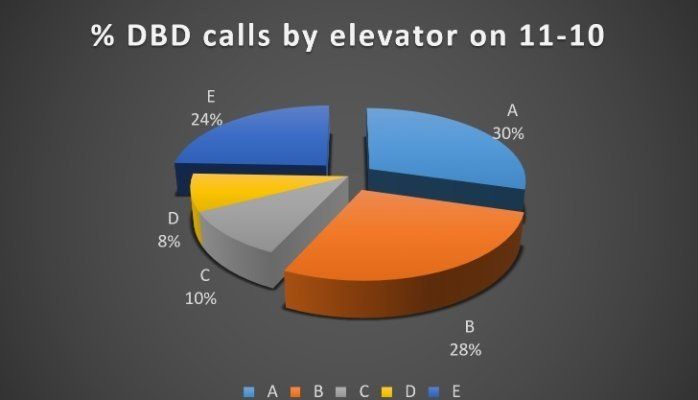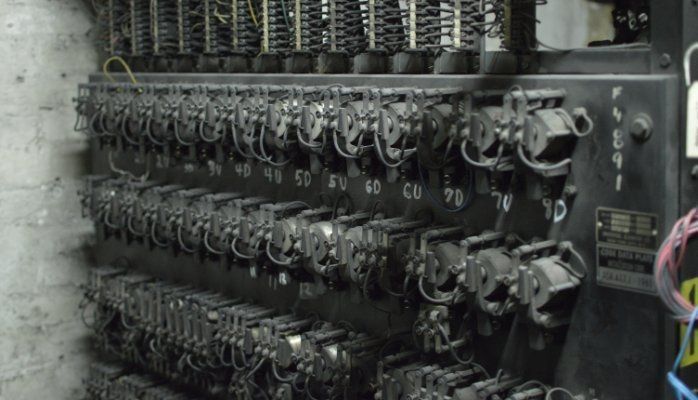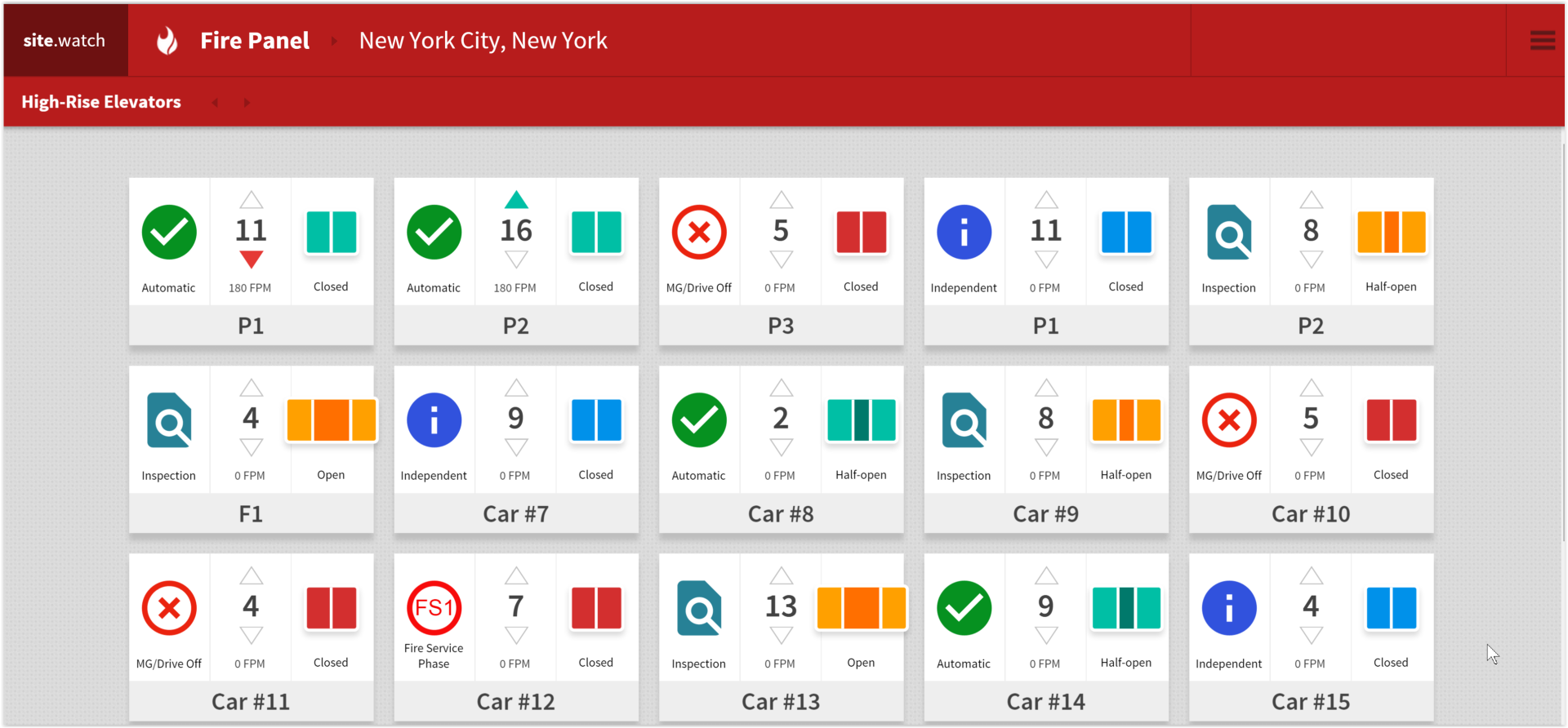Amarnauth Eric Appana • May 30, 2019
Do you Need an Expensive Oscilloscope to Troubleshoot an Elevator?
"Hey Bob, The Car at 78th Street is Down Again"
How many times has a elevator shutdown and you were at a lost as to what is wrong with it?
You changed part after part and the elevator shuts down again
Many times we know what the issue is:
- Positioning Signals
- Speed Reference
- Speed Feedback
- Communication Signals
Elevator companies would continue to swap parts and hope they fixed it.
An Oscilloscope would be able to tell you if the signals are good, or in some cases, present at all.
Oscilloscope Pricing
With the prices of oscilloscopes coming down,
A good oscilloscope can be had for about $700.00 with all the options a $5000.00 oscilloscope would have came with five (5) years ago.
Example of a Bad Positioning Signal
The bad floor positioning signal caused the elevator to stop off level, or generate floor positioning errors, causing the elevator to shutdown.
Placing the Oscilloscope on the Floor Positioning Signals allowed us to see the noise on the signals. The encoder wiring was seeing noise due to a broken shield in this case.
Without the Oscilloscope,
The Elevator Company may have swapped all the positioning boards, costing them time and money.
Food for Thought

By amarnauth APPANA
•
October 11, 2019
There are many people that ask what is required. You can understand why there are questions, there are many products out there today. Below are the basic outline of what is required for the device to do: Prevent the elevator from running when the door lock circuit has malfunctioned This encompasses many scenarios, i.e. broken elevator part, or human error Prevent the elevator from running when the car gate circuit has malfunctioned This encompasses many scenarios, i.e. broken elevator part, or human error Prevent the elevator from running if the doors are not in the fully closed position This is ensure car door and hall door are in the correct position prior to allowing the elevator to begin its run to the next floor

By Amarnauth Eric Appana
•
May 30, 2019
Back when Estimated Time of Arrival was the best dispatching available on the elevator market, the Average Wait Time was the measuring stick used to determine how well the elevator group was running. The lower the Average Wait Time, the better the elevator group was performing for the building. Today, we have Destination Based Dispatching (DBD), where the Average Wait Time increases, but the Time Spent in the Elevator decreases. What can we use to determine if the Elevator Group is performing properly. DBD Calls Taken at a Common Floor Consider this, If we want to see if the DBD system is properly dispatching, we should look at how many DBD calls are being taken from a common floor. In this case, I prefer using the Lobby Level (or a floor where the majority of the building tenants enter the building). Let's look at what happens when we use this method. After running a common floor call report, It appears that Elevator 'C' and 'D' are not taking as many DBD calls from the Lobby in the morning as the other elevators. We can see running a report for a 12 hour day shows Elevator 'C' and Elevator 'D' were not taking as many DBD calls from the Lobby throughout the day. A Destination Based Dispatching system should be able to evenly spread the calls from the Lobby floor to all available elevators. After correcting the issues keeping Elevator 'C' and Elevator 'D' from taking as many DBD calls from the Lobby as the other three elevators. We now see the Group Performance has improved. Group Performance after Investigating Issues The DBD calls taken from the Lobby by Elevator 'C' and Elevator 'D' has increased significantly. The Elevator Group Dispatcher appears to be operating in a more balanced manner. Running a % DBD Calls taken from a Common Floor shows the percentages are even between the elevators. This demonstrates that all the elevators are getting to the Lobby to answer DBD calls. Conclusions Average Wait Time can still be used to see if the elevators are picking up passengers in a timely manner, but maybe it's time to see if all the elevators are answering calls properly. With today's dispatching technology, % DBD Calls from a Common Floor may come in handy to help us determine if the system is running as well as it should.

By Amarnauth Eric Appana
•
May 30, 2019
"I Want to Modernize my Elevators" In Today's Market, we here this from more and more Building Owners. The Next Question Elevator Contractors get is: " I want the System Across the Street" This leads us to the Types of the Items Available in the Elevator Market. I get a lot of questions about Destination Based Dispatching from Building Managers, People new to the Elevator Industry and Elevator Technicians who want to gain more knowledge about the Industry they are in. In this Post, I will attempt to explain the Different Types of Dispatching Available in Today's Elevator Market. Please Note: This is a Basic Discussion of Elevator Dispatching Items. Estimated Time of Arrival (aka ETA) Estimated Time of Arrival (or ETA), uses various elevator items to determine the best elevator to answer the hall call. These items may include: Elevator Position Speed Direction Hall Call Location Based on these items, the dispatcher determines which elevator can best answer the hall call at a floor in a reasonable time. ETA systems will have up and down buttons in the hall way. This system has been around since the early 80's and is the standard dispatching system used today for most elevator controller companies. Lobby Booster Destination Based Dispatching Lobby Booster Destination Based Dispatching allows passengers to select their floor at the lobby level (usually, that will be the subject of another post later on) via the keypad, or touchscreen. This allows the user(s) to be sorted by a group of floors. The user will wait for the elevator a little longer, but their Overall Time to Reach Their Floor will be shorter due to the Shorter Time Spent in the Elevator. The rest of the other floors will have Up and Down Buttons. This system is considered when the building has: Transient People: This is seen in buildings with Medical Offices, Temporary Office Space Companies, etc. Cafeteria located in the Building: This can be considered a worst case scenario where most of the building population maybe at this floor. If the building is under elevated, having Up and Down Buttons may help get users into the elevator closest to the floor, keeping traffic flowing. Full Destination Based Dispatching Full Destination Based Dispatching places a keypad, or touch screen on all floors the elevators service. Users going to a common floor are grouped together. These floors may include: Conference Room Floors: Some Class 'A' Buildings with One (1) Tenant have whole floor(s) dedicated to Conference Areas. Roof Top Bars (Cafeteria Areas): If the building is not under elevated, then Full Destination Based Dispatching allows the grouping of passengers going to these areas. Which Dispatching System is Best? This is a hard question to answer. The Traffic Analysis Reports I have done over the years, I have yet to see a situation where one system was always better than another one in every scenario. This is due to a lot of factors associated with the building, location, occupancy, as well as the elevator system they currently have in the building (in the case of a modernization). On a new construction, we can specify the amount of elevator needed to move the passengers, but on a modernization, we are limited. In the end, The best answer is to perform a Traffic Analysis with as much data as you can.

By Amarnauth Eric Appana
•
May 30, 2019
"Can you explain Time to Destination to me?" I have been getting more and more questions about Time to Destination, such as what should be measured on an existing system to get a before and after number to show the client, or how do I know if the report generated is showing a true Time to Destination? I will present what I believe is best way to measure Time to Destination. Time to Destination Measurements Average Wait Time - This has been the standard measurement used to determine the time a passenger waits for an elevator. Under 30 seconds indicated good service in a building before Destination Dispatch systems. Average Time Spent in the Elevator - This is where Destination Dispatch has its advantages over a Estimated Time of Arrival (otherwise known as ETA). Here are the items I measure to get an Average Time Spent in the Elevator (otherwise known as Average Transit Time) Door Dwell Time at Current Floor - Amount of time the doors stay open at the floor the passenger enters the elevator Door Close Time at Current Floor - Amount of time the doors take to close. Start Delay - Amount of Time the elevator goes from standstill to movement. This will indicate how long door locks, car gate, controller relays take to allow elevator movement. Door Open Time at (n) Floor - Amount of time the doors take to open on a floor that is not your destination floor. Door Dwell Time at (n) Floor - Amount of time the doors remain open on a floor that is not your destination floor. Door Close Time at (n) Floor - Amount of time the doors take to close on a floor that is not your destination floor. Elevator Exit Time - Amount of time it takes a passenger to step out the elevator. This item can add time to the Time to Destination number if the elevator is crowded with people going to different floors. This scenario can be seen during peak times. Time to Destination Calculations It maybe a lot of numbers above to total up, but the items above will provide the best times to show a customer a before and after improvement in their building traffic. Conclusions Most of the items above are taken into account on most traffic reports with the exception of the Elevator Exit Time. If there are many passengers going to the same floor, then the Elevator Exit Time will be shorter than a crowded elevator stopping on many floor. This is where Destination Dispatch systems decrease its Time to Destination numbers. I hope this article has helped those understand Time to Destination numbers better. Regards,
